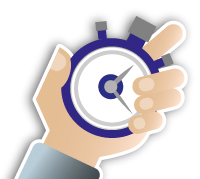 In this article I am going to introduce a few specialized IT systems that can be quite useful for procurement/sourcing offices. But first let’s mention what most organizations of a certain size are currently using.
In this article I am going to introduce a few specialized IT systems that can be quite useful for procurement/sourcing offices. But first let’s mention what most organizations of a certain size are currently using.
The need for an ERP
An ERP helps an organization manage all the information related to purchases, inventory, sales, accounting & finance, etc. All the information is in a single database, which makes communication easier among departments.
An ERP is a big improvement over using Excel files. Don’t think Oracle and SAP — some ERPs cater to SMEs and keep complexity down to a minimum.
Limits of ERPs, and the need for an extra “layer”
However, it seems most ERPs don’t do a good job managing the source-spec-buy-make-check-deliver chain of activities. And, in large companies, users have to get data from several old systems that don’t communicate well together.
A solution for some importers is to add a “layer” on top of their ERP(s). That layer is an extra piece of software that pulls data from the existing system(s) and presents it to users in a way that supports their workflow.
For example, users can see where they are in their workflow, set reminders, share information at the click of a button, get the right file (in the latest version) in the hands of the right people in order to reduce mistakes, and so on.
If accompanied by workflow re-engineering, the benefits of such a “top layer” can be much higher. In any case, if an organization keeps its current processes untouched, the new software will make users more efficient at performing them.
Over the years I have met with a number of representatives who sell this type of solutions. Note that I certainly don’t know all of them! I tried to categorize them in a way that makes sense to me.
1. Light solutions focused on sourcing & purchasing
I only know Winddle, which works fine for SMEs and also serves several large companies. They are basically a project management solution customized for the purchasing function. I don’t know any similar solutions on the market.
Their “software as a service” model is naturally more flexible and easier to maintain over time. I expect this type of solution to displace the “old style” solutions listed below in more and more companies.
2. More traditional software solutions
These companies target midsize and large companies (typically their bread and butter is the large retail chains). I would categorize them in two buckets.
2.1 Solutions focusing mostly on product development & sourcing
- TradeStone Software
- CBX Software
2.2 Logistics
- DDS Logistics & Sourcing Software (they started to manage the movement of materials & goods, and they now also manage sourcing, the fully loaded cost of goods, etc.)
3. Large companies that provide an IT solution as part of their service
I am not really describing a “layer that makes internal processes more efficient” here, but rather an IT solution that manages all information about a certain aspect of the supply chain.
Some large logistics companies, such as Yusen Logistics, have developed this type of IT solution. Their software gives a lot of visibility over what inventory is where, what happens, etc. Since it can be configured to a certain extent, it can adapt to the specificities of a company’s supply chain.
However, it does not help with sourcing, product development, or purchasing. And an additional downside is its belonging to a service provider… What if you want to switch to another freight forwarder?

Hi, long time follower here.
I wonder if anyone had some experience with the Open Source ERP called Odoo.
I did some QC related customizations for a customer and I find it very useful.
cheers,
Davide
I have talked to a few companies over the years that specialize in implementation of Odoo. They say it is a good fit for certain companies. And the manufacturing module will probably be vastly improved in 1-2 years.